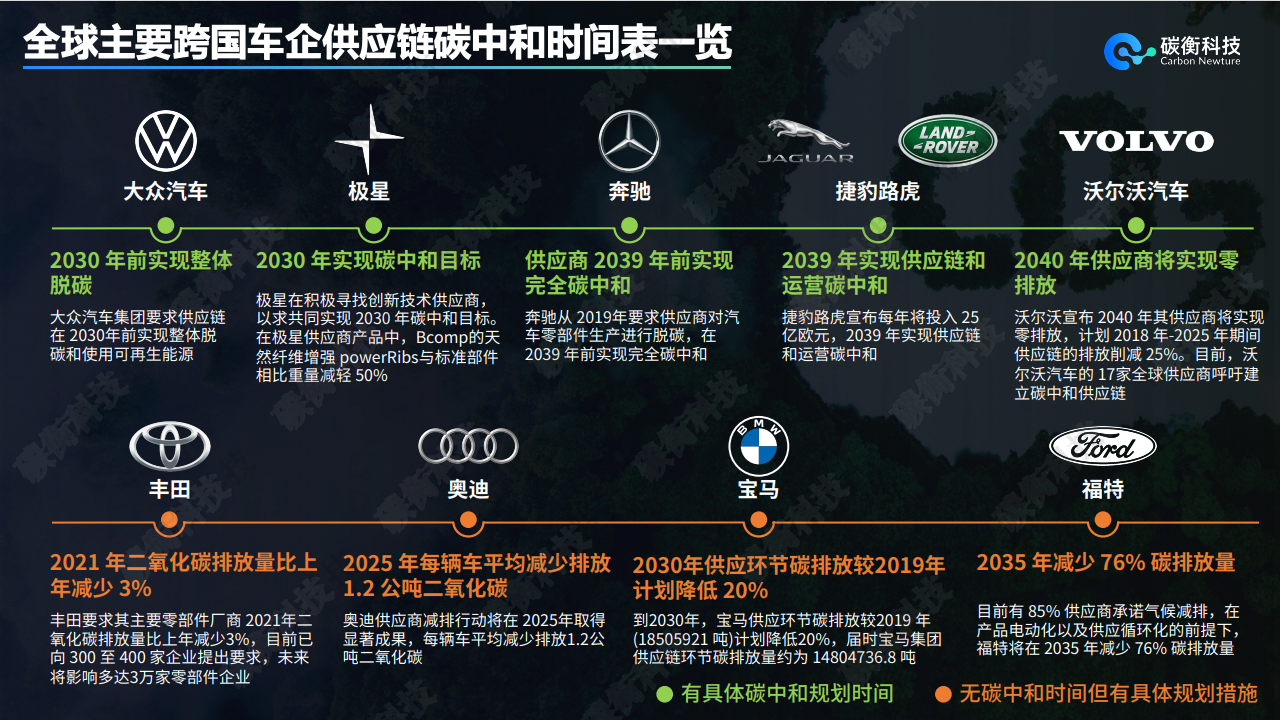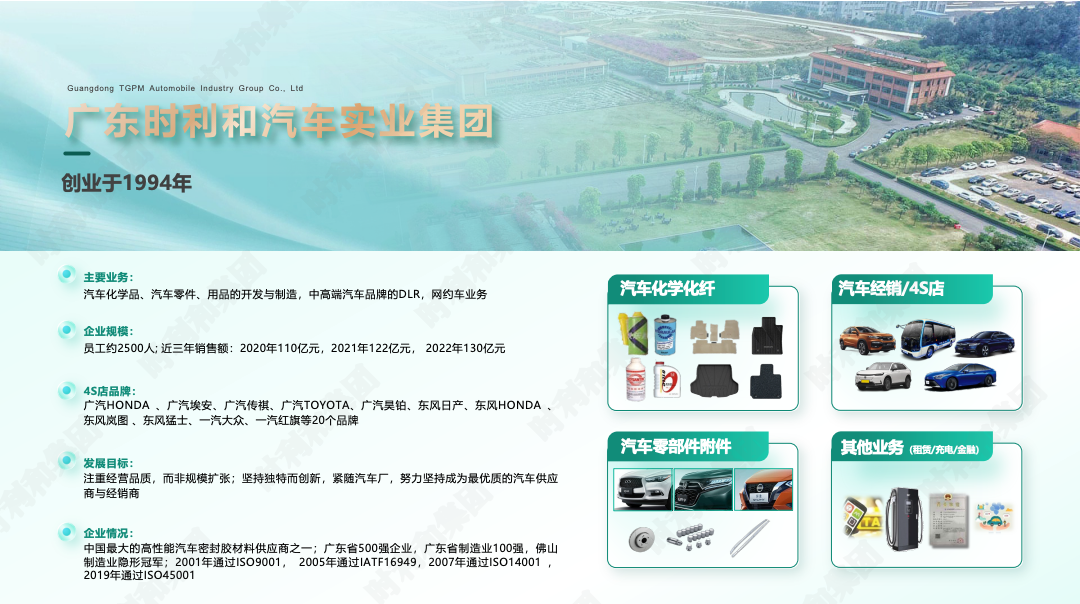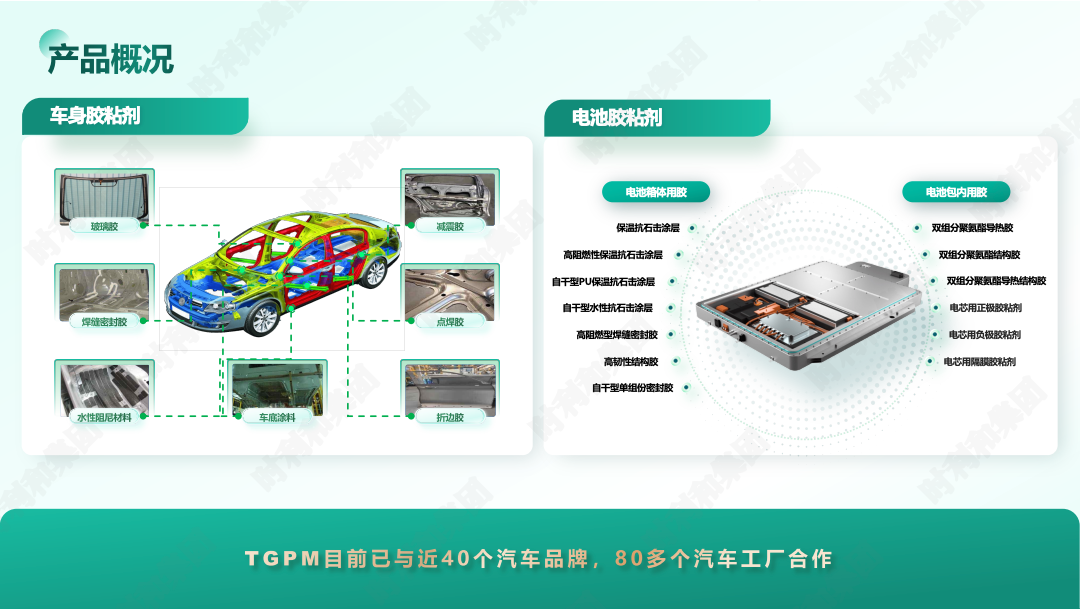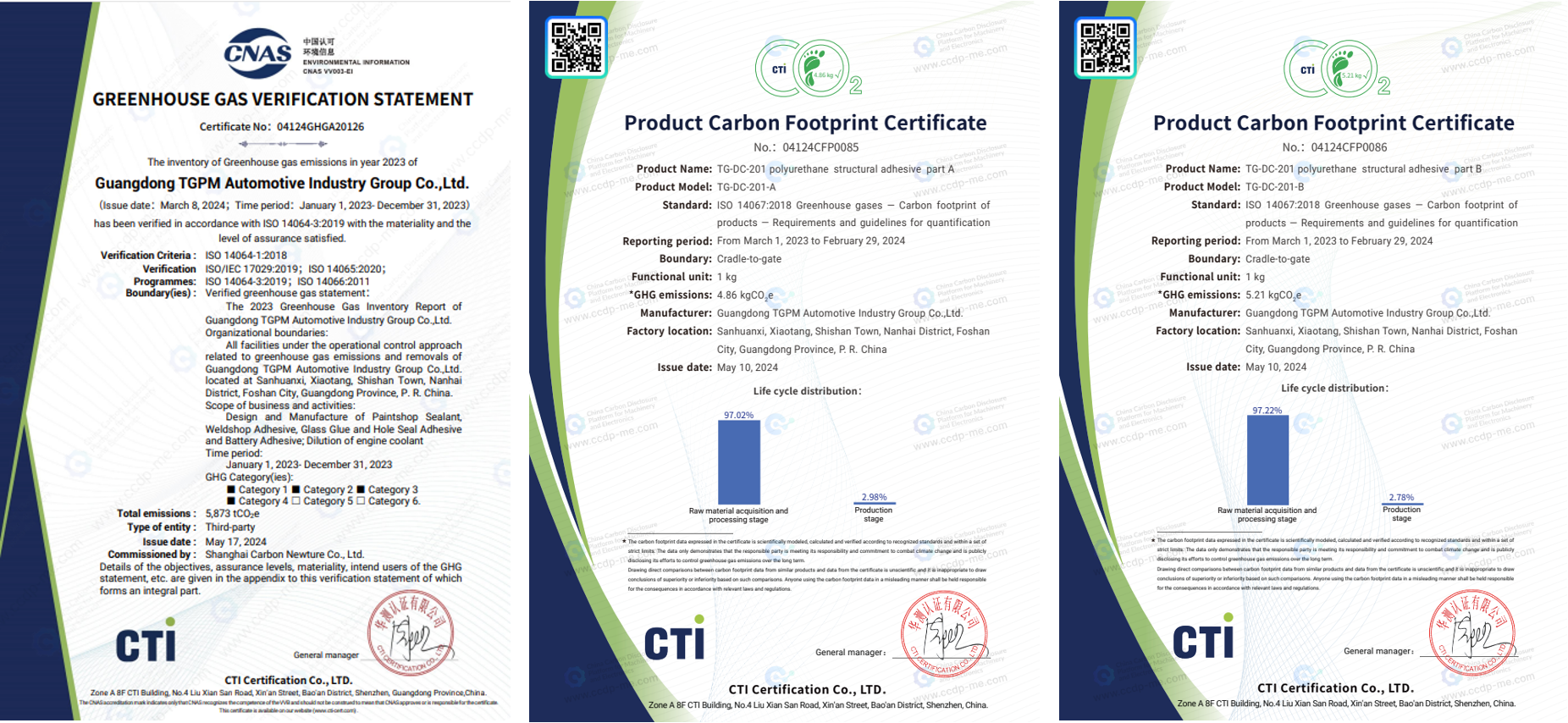In recent years, China's dual-carbon development has progressed rapidly. From the initial exploration phase to the current stage of increasing clarity, many automotive companies have gradually discovered tailored paths to carbon neutrality. However, decarbonization is a systemic transformation. Although a collaborative carbon reduction trend within the automotive industry chain has begun to take shape, upstream and downstream enterprises in the supply chain must continue to forge ahead. By leveraging the power of the entire industry chain, they can promote the low-carbon transition and upgrade, collectively moving towards a new stage of higher quality and sustainable development.
As downstream brand customers awaken to low-carbon development awareness and take action, how should upstream enterprises respond and stand out? Let's see how Guangdong TGPM Automotive Industry Group (TGPM) has answered this challenge.
01.When carbon footprint becomes a procurement hard requirement
Many companies have built a reliable and compliant carbon data foundation through product carbon footprint calculation, corporate GHG inventory, and supply chain carbon tracing. Based on this data, they make scientific carbon reduction decisions and carbon neutrality plans.
These pioneering carbon reduction companies are mostly key players in their industries, with significant influence and a strong ability to drive change, a characteristic particularly evident in the automotive industry. As shown in the figure below, many leading car manufacturers have not only formulated carbon neutrality plans but also place great emphasis on supply chain decarbonization. They integrate decarbonization tasks into supply chain management, using the low-carbon performance of upstream products (such as the carbon footprint of upstream products and the carbon reduction progress of upstream companies) as hard procurement requirements to constrain upstream carbon reduction efforts, thereby achieving supply chain carbon neutrality targets.

Overview of the carbon neutrality timelines for supply chains of major global automotive multinationals, illustrated by Carbon Newture
If the carbon footprint of upstream components decreases, the overall carbon footprint of the vehicle will correspondingly decrease. For original equipment manufacturers (OEMs) or car manufacturers, this reduces the pressure to achieve carbon neutrality. Thus, while the carbon footprint of upstream components constrains the vehicle's overall carbon footprint, lead automakers can promote and assist upstream enterprises towards lower carbon directions through green procurement policies and supportive measures. Upstream suppliers actively respond to downstream customers' calls for low-carbon transformation, collaborating from the source to implement carbon reduction management effectively, achieving a win-win situation.
02.Answer for TGPM
Founded in 1994, TGPM is a national high-tech enterprise and recognized as a national green factory. It ranks among the top 100 manufacturing enterprises in Guangdong Province and the top 100 enterprises in Foshan City. Headquartered in Foshan, Guangdong Province, TGPM is primarily engaged in industries related to automobiles. This includes the development and manufacturing of automotive chemicals, automotive parts, and automotive products. Their automotive chemicals primarily consist of various adhesives and sealants specifically for automobiles, including coating adhesives, welding adhesives, glass adhesives, door adhesives, and battery adhesives.

Source:TGPM

Source:TGPM
TGPM is one of the largest suppliers of automotive fine chemicals in China. Its body adhesives and battery adhesives are widely acclaimed. Currently, TGPM collaborates with nearly 40 automotive brands and over 80 automotive factories. Major customers include Honda, Toyota, Nissan, SAIC Motor, Great Wall Motors, XPeng Motors, Tesla, BYD, CATL, and others.
As downstream automotive manufacturers prioritize upstream product carbon footprints as hard procurement criteria, TGPM believes that carbon calculation, inventory, and management are crucial. Therefore, to meet the carbon management needs of downstream customers and ensure its own sustainable development, with the assistance of Carbon Newture, TGPM has conducted corporate-level carbon inventory and product carbon footprint calculation, obtaining certification from authoritative third parties. Leveraging excellent product quality and strong performance in carbon reduction, TGPM has gained recognition and orders from downstream customers.

Certificate of corporate carbon inventory and product carbon footprint for TGPM
03.Conclusion
The natural supply chain ecosystem determines that the carbon neutralization path of downstream lead enterprises is paved by countless upstream supply chain companies. The vast low-carbon management ecosystem built by lead enterprises is gradually being perfected. As the coverage and depth of this management network expand, less and less time is left for upstream suppliers to "transition to low-carbon."